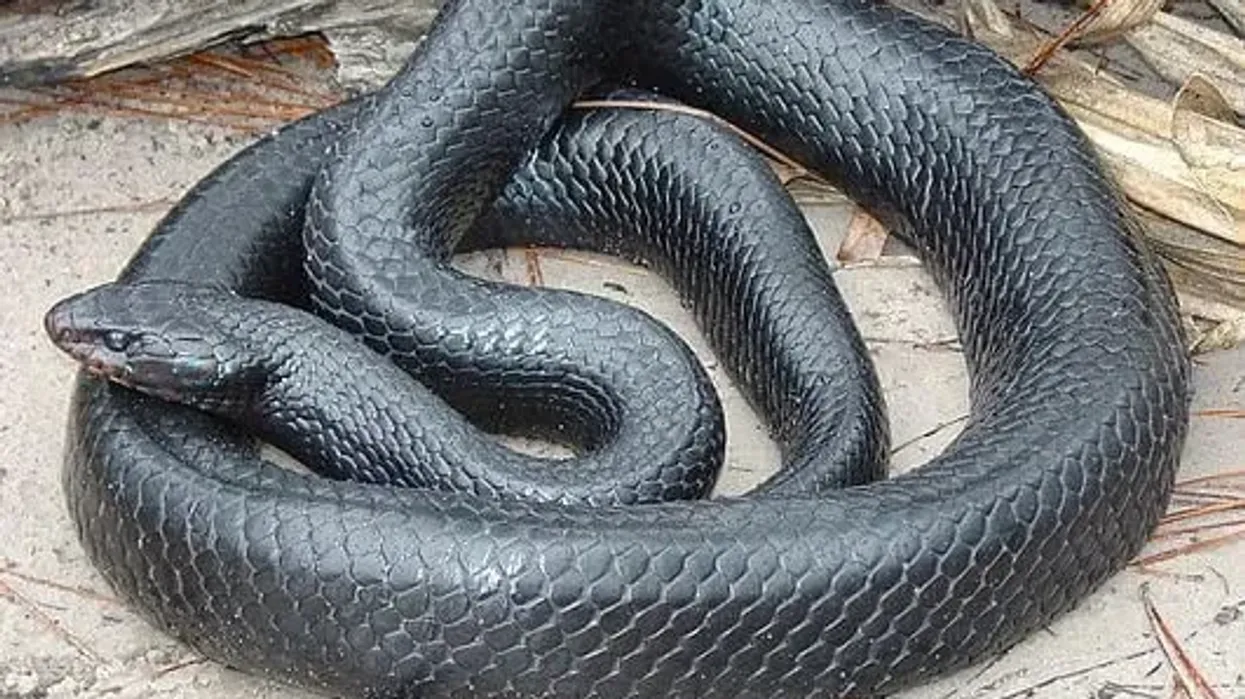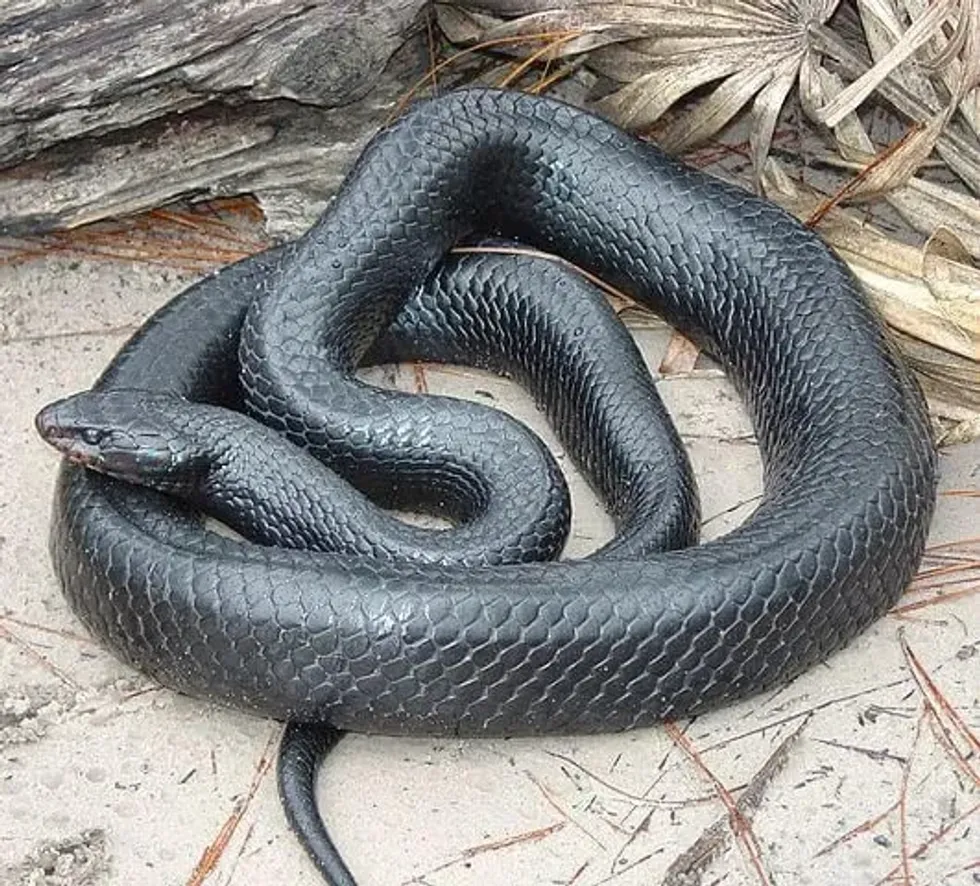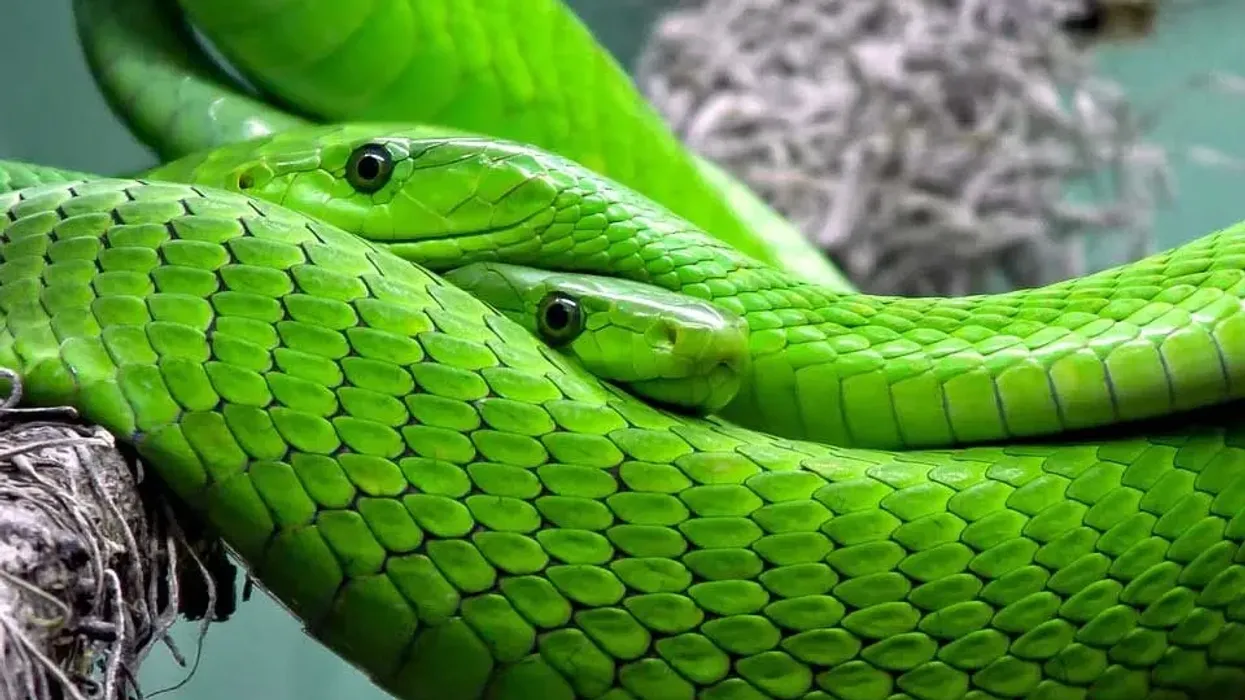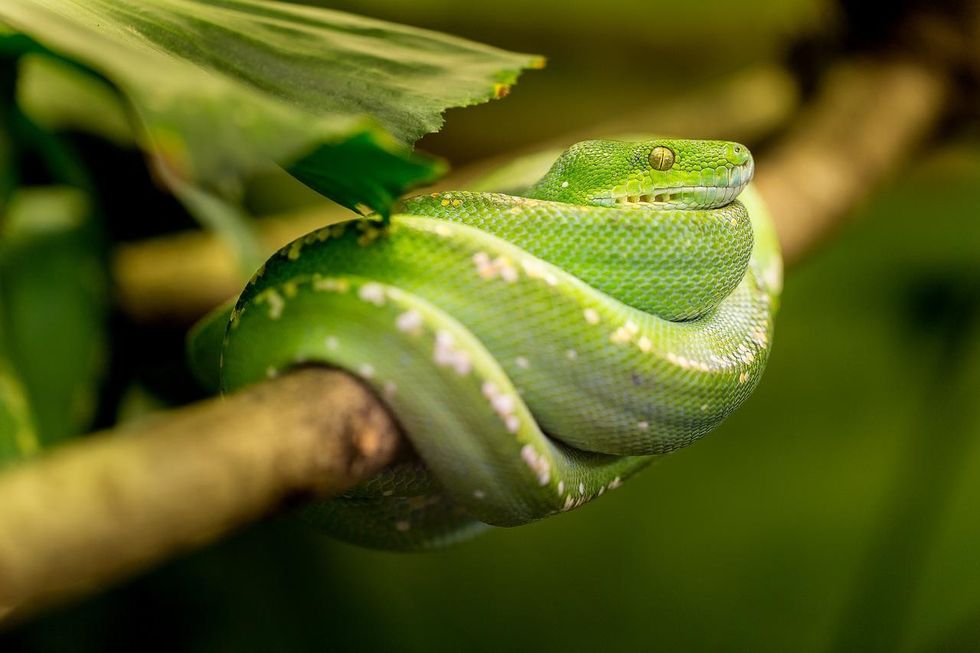With their beautiful blue-black scales, vibrating tails, and calm and docile personality, eastern indigo snakes are truly fascinating.
The scientific name of the eastern indigo snake, Drymarchon couperi, alludes to the word 'drymarchon', which means 'Lord of the forest' in Greek.
This is pretty apt for a snake who is the largest snake in all of the United States and is resistant to most other snakes' venom, even that of rattlesnakes. Unfortunately, this beautiful snake is now facing the threat of going extinct due to hunting and killings, road accidents, and the destruction of its habitat.
However, as they are protected by the Endangered Species Act it is illegal to capture or kill them without specific permission from the state.
There are many interesting facts about this 'Lord of the forest' snake. If you like reading fun facts about snakes, please take a look at our kukri snake and Asian vine snake facts too!
Eastern Indigo Snake Interesting Facts
What type of animal is an eastern indigo snake?
As evident by the name, the eastern indigo snake is a species of snakes found around the eastern part of the United States. They earned their name because of their shiny ventral scales that display an iridescent dark purple color in bright light.
What class of animal does an eastern indigo snake belong to?
Eastern indigo snakes belong to the class Reptilia, and just like most other reptile species, they lay eggs instead of giving birth to live babies. The scientific name of the eastern indigo snake, Drymarchon couperi, alludes to the meaning of the first word 'Drymarchon', which means 'Lord of the forest'.
How many eastern indigo snakes are there in the world?
It is hard to say just how many eastern indigo snakes are left in the world, but, the population of this species is on a constant decline. A major reason for this is habitat loss.
Where does an eastern indigo snake live?
This beautiful snake species is found around Georgia, South Carolina, Alabama, Florida, and Texas in North America.
What is an eastern indigo snake's habitat?
When it comes to their habitat, eastern indigo snakes prefer freshwater marshes, ravines, burrows, hollowed-out logs, land crab burrows, and longleaf pine forests. Although they are not a migratory species in the traditional sense of the word, they are known to change their habitat seasonally.
Who do eastern indigo snakes live with?
These diurnal creatures are solitary in nature and are only known to interact with other members of their species during the mating season.
How long does an eastern indigo snake live?
Eastern indigo snakes have a long life span. In the wild they live for 12-21 years, however, in captivity, if they are taken care of properly, they have been known to live for 16-25 years. Unfortunately, their numbers are constantly declining due to habitat loss and falling prey to the international pet trade.
How do they reproduce?
Most of the research on the breeding process of these snakes has been done in Florida, and the breeding season there lasts between November and April.
Unlike most other species of snakes, the eastern indigo snake is known to breed in the winter. Females discharge pheromones to indicate their availability as mates to males.
However, if more than one male finds a female by following her scent trail dominance battles for the female's attention will ensue, during which males try to push each other's heads to the ground.
The victor of this battle mates with the female. Females are known to lay eggs between May and June, and between four and 12 eggs are laid.
Females often seek out abandoned burrows, like those of gopher tortoises, as well as pine flatwoods and hardwood hammocks to lay eggs, and these eggs are known to hatch within three months of being laid, between August and September.
What is their conservation status?
They are listed as a species of Least Concern in the IUCN's Red List of threatened species. However, their population is on a constant decline throughout the United States. Major reasons for this are habitat loss and illegal trafficking of these snakes through the international pet trade.
Eastern Indigo Snake Fun Facts
What do eastern indigo snakes look like?
Eastern indigo snakes have a scale pattern that is blue-black in color throughout their body with an orangish cream tinge on their throat, cheeks, and chin area. They are known to have about 17 rows of scales on the middle range of the body.
Sexual dimorphism is noticed in this species, as females tend to be smaller in length than males. The Drymarchon couperi is known to be the largest snake in all of the United States, but they are often confused with racers too.
Racers are generally smaller and thinner than eastern indigo snakes and they have dull black scales instead of the shiny black ones that eastern indigos have.
They also have a brown or creamy brown throat and cheeks instead of the orangish tinge that indigos have. Much like rattlesnakes, this species is known to vibrate its tail when threatened.
However, they very rarely bite. Hatchlings of eastern indigo snakes look like miniature versions of adults, but with additional white-colored bands throughout their bodies.

How cute are they?
Eastern indigos are considered very cute, just like queen snakes, by all snake lovers! Indigos are also pretty docile in nature, and even though they are known to vibrate their tails and hiss loudly to warn away danger, they are not really known to bite.
Unfortunately, their numbers are constantly declining due to the loss of their habitats, including gopher tortoise burrows and longleaf pine forest habitats.
How do they communicate?
These snakes are known to be primarily solitary in nature and only interact with other members of their species during the mating season. Males follow scent trails of pheromones that females discharge to find mates.
They are also known to hiss and vibrate their tails if they are threatened, even though they seldom bite. They are actually known to be pretty docile in nature.
How big is an eastern indigo snake?
The Drymarchon couperi is known to be the largest snake species in all of the United States, and their length is within the range of 6.5-8.5 ft (2-2.6 m), which interestingly is about the same length as an African lion!
How fast can an eastern indigo snake move?
While it is hard to say just how fast these snakes can move, it can be assumed that the speed is quite fast as they tend to chase their prey successfully. Unfortunately, their numbers are on a constant decline due to the loss of their longleaf pine habitat as a result of habitat fragmentation.
However, as they are protected by the Endangered Species Act, conservation efforts are being made throughout Florida and Georgia where their populations are is most threatened.
How much does an eastern indigo snake weigh?
Eastern indigo snakes are the largest non-venomous snakes found in eastern and southern America and they are known to weigh around 6.5-11 lb (3-5 kg).
What are their male and female names of the species?
Like most other snakes, indigo snakes do not have specific names for male and female snakes. They are just called male indigo snakes and female indigo snakes. There is sexual dimorphism noticed in the species though, as males and females vary in length.
What would you call a baby eastern indigo snake?
Babies of eastern indigo snakes are called hatchlings when they are first born. Interestingly, they are born pretty well-developed and already look much like adults, although much smaller in length.
What do they eat?
Their diet consists of turtle eggs, small mammals, birds, lizards, land crabs, fish, and frogs as well as other snakes, including both venomous and non-venomous snakes. They are known to be resistant to a lot of snake venom, including that of the rattlesnakes.
They are known to be the only snake species that eat young gopher tortoises.
While most other snakes eat their prey while they are still living, this snake usually bashes their prey on a nearby object until they are exhausted and cannot escape.
They also use their powerful jaws to pin their prey (including gopher tortoises) down to the ground until all the fight leaves their body and they are able to be eaten.
Are they poisonous?
Eastern indigo snakes are known to be the largest snakes in all of the United States, and the largest non-venomous snakes in eastern and southern America. So, no, they are not poisonous.
However, unlike most other non-venomous snakes who immobilize their prey by constriction, they are known to use a different method.
They bash their prey on a nearby object until they are so exhausted that they cannot try to escape. These non-venomous snakes inhabit longleaf pine habitats, like pine rocklands, and abandoned burrows left by gopher tortoises, and are known to be the only species of snakes to eat young turtles.
Would they make a good pet?
Eastern indigo snakes make pretty good pets due to their docile nature, making them similar to gopher snakes who are intelligent animals who have done well in captivity.
As they violently kill their prey before eating it in the wild, owners tend to keep them on a diet of dead animals to avoid any violence and injuries.
These eastern indigos have also been noticed to be pretty responsive pets once a trust bond is established with their owners, just remember to handle them gently as they tend to get defensive if faced with harsh handling and might rarely end up biting you.
Did you know...
The scientific name of the eastern indigo snake, Drymarchon couperi, alludes to the word 'Drymarchon', whose meaning in Greek is 'Lord of the forest'.
Why is the eastern indigo snake important?
They are very important to the ecosystem in their habitat as they eat rodents and venomous snakes. In fact, they are extremely docile and are not known to bite unless provoked tremendously. Unfortunately, killings of this species have lessened their numbers to a threatening degree.
Are eastern indigo snakes endangered?
Although they are listed as a species of Least Concern in the IUCN Red List, their numbers are constantly declining in their natural habitats because of killings, illegally capturing them for the international pet trade, and the destruction of their longleaf pine habitat and of the gopher tortoise burrows that they rely on.
This habitat destruction has resulted in severe population declines for this snake, and may affect the species' conservation status in years to come.
Here at Kidadl, we have carefully created lots of interesting family-friendly animal facts for everyone to discover! Learn more about some other reptiles from our dwarf crocodile facts and leatherback sea turtle facts pages.
You can even occupy yourself at home by coloring in one of our free printable eastern indigo snake coloring pages.










